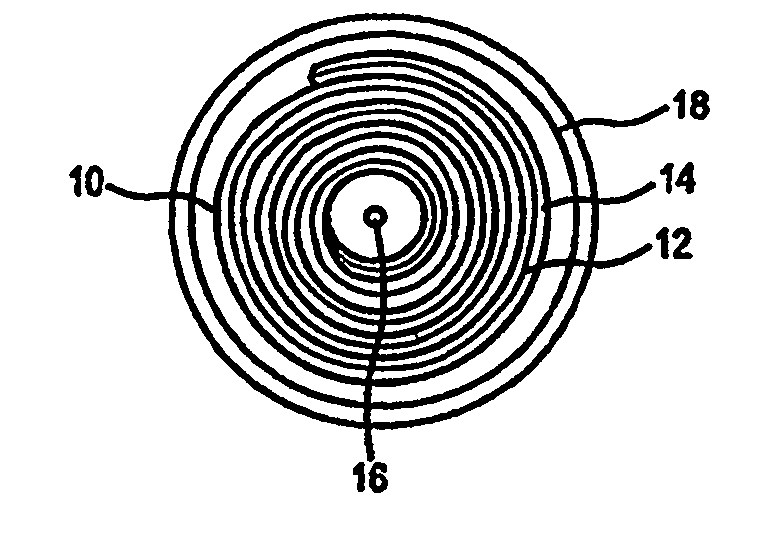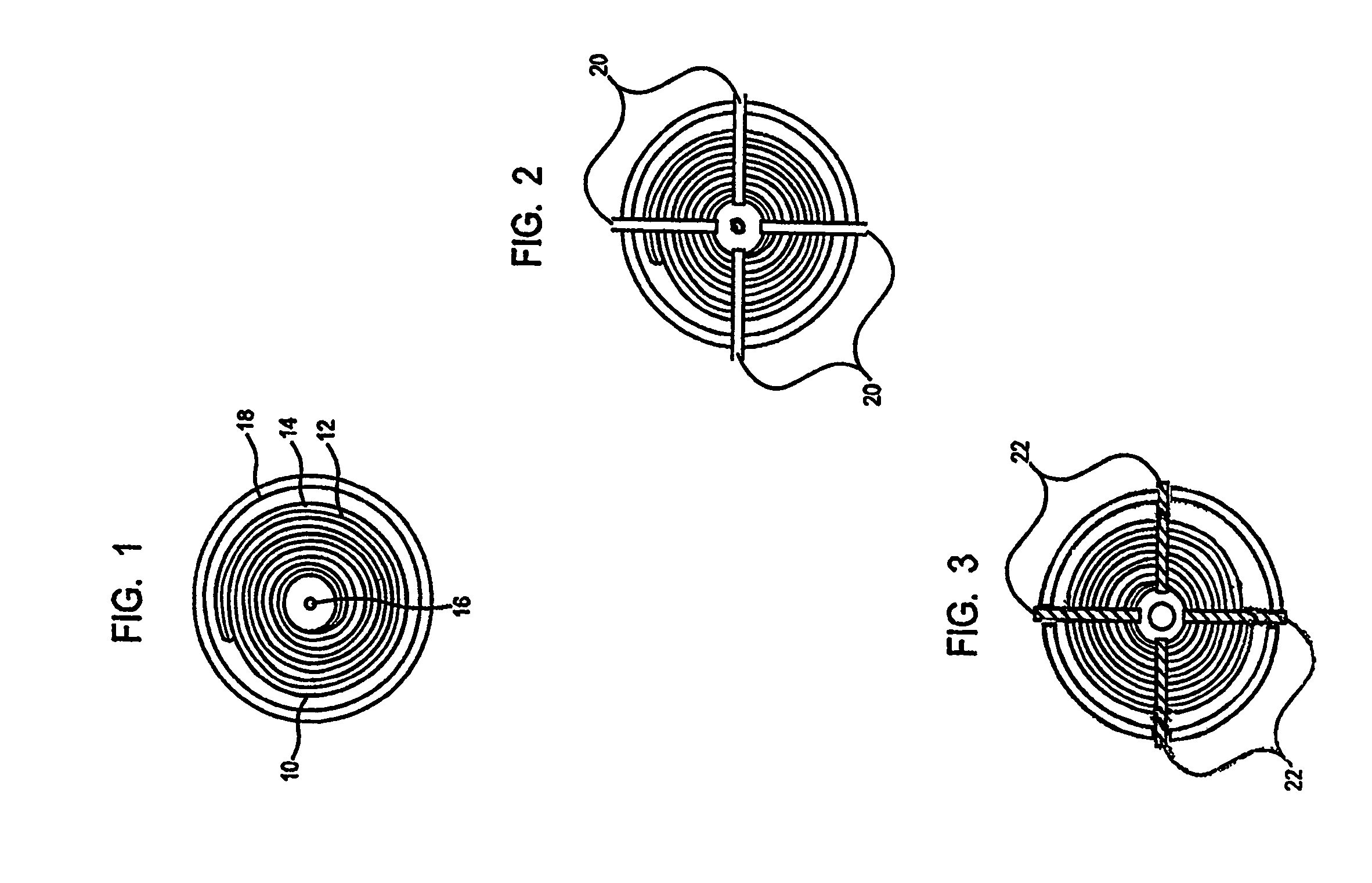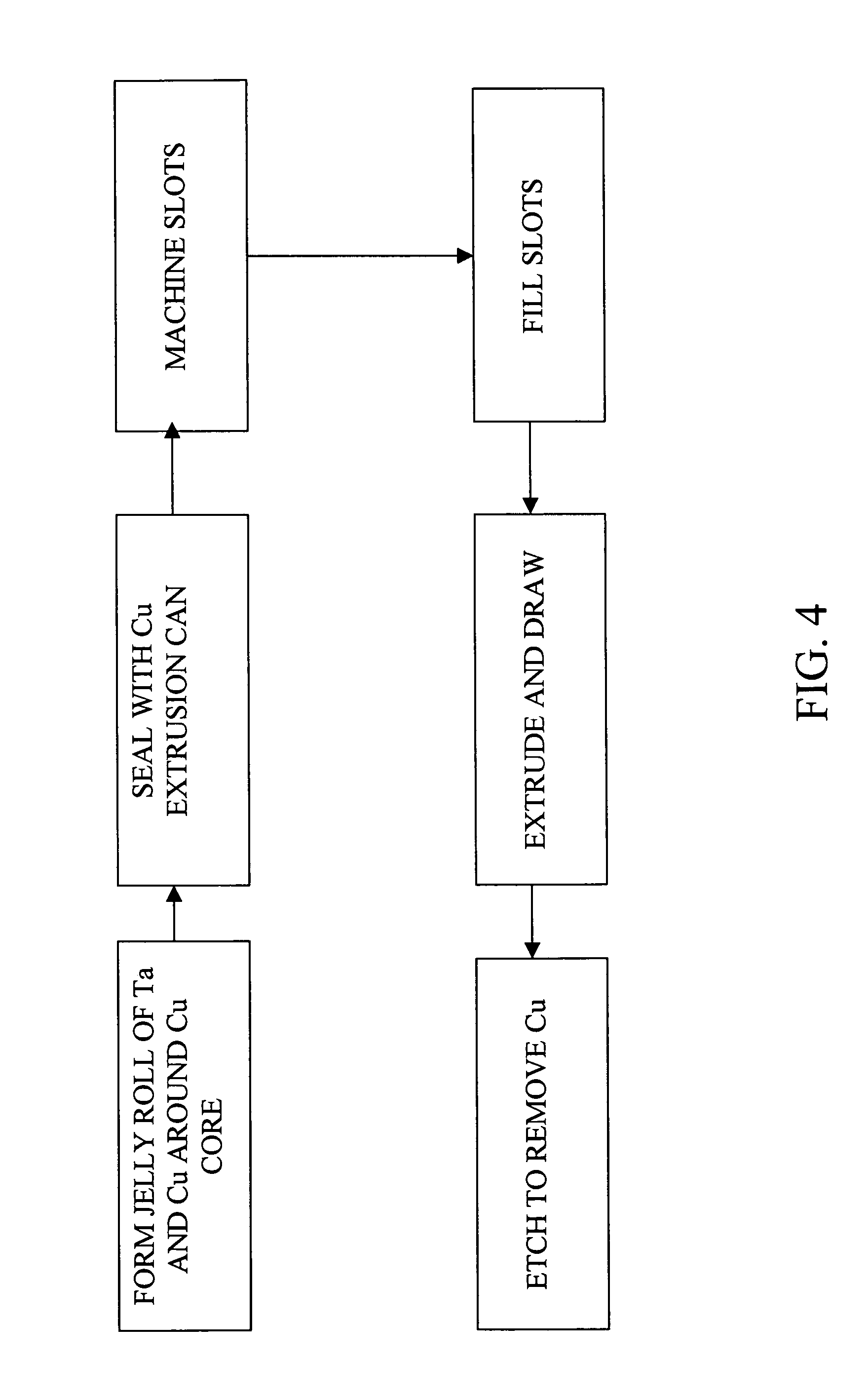Methods for fabrication of improved electrolytic capacitor anode
an electrolytic capacitor and anode technology, which is applied in the direction of electrolytic capacitors, layered products, transportation and packaging, etc., can solve the problems of increasing manufacturing costs, reducing product yield, and tantalum powders commercially available today have several serious problems with anode fabrication, etc., to achieve greater uniformity, easy control of starting sheet thickness, and simple billet assembly
- Summary
- Abstract
- Description
- Claims
- Application Information
AI Technical Summary
Benefits of technology
Problems solved by technology
Method used
Image
Examples
example i
[0029]A 0.381 millimeter thick copper sheet and a 0.305 millimeter thick tantalum sheet were wrapped in jellyroll fashion around a 2.54 centimeter round copper rod to form a jellyroll approximately 3.30 centimeters in diameter. The jellyroll was placed in a copper extrusion can and a nose and tail welded in place. Four radial slots 2.20 millimeters wide were machined at 90° spacing through the periphery of the can to the copper rod. The slots were then backfilled with copper which was sealed to the copper can by welding.
[0030]The resulting billet was then extruded and drawn to a diameter of 0.127 millimeters. The resulting extruded and drawn rod was then submerged in a solution of one part nitric acid to one part water to leach away the copper. The resulting tantalum filaments were then vacuum sintered at 1500° C. for 20 minutes. The resulting tantalum segments were approximately 1 micron in thickness having the shape of segments of a split tube.
example ii
[0031]In addition to the jellyroll design of Example I, several other modifications are possible. For example, alternating tantalum and copper sheets can be formed as stacks 30 in flat orientation as is shown in FIGS. 5-6, and placed in copper extrusion cans and a nose and tail welded in place. Four radial slots (not shown) may then be machined at 90° spacing through the periphery of the can, the slots filled with copper, and the resulting billet can be extruded and drawn as following the procedure described in Example I. The resulting extruded and drawn rod may then be submerged in a solution of nitric acid to leach away the copper, and the resulting tantalum filaments may then be vacuum sintered as in Example I.
example iii
[0032]Alternatively, alternating tantalum and copper sheets can be stacked in packets 40 which are then arranged together, separated by continuous copper sheets 42 in various orientations, placed in copper extrusion cans as shown in FIGS. 7-10, and a nose and tail welded in place. Alternatively, stacks of tantalum and copper sheets may be surrounded by a jellyroll formed of alternating layers of tantalum and copper, e.g. as shown in FIG. 11.
[0033]The resulting billets may then be extruded and drawn, subjected to copper leaching and sintering following the procedure of Example I.
[0034]Restacking rods of Examples I and II at larger diameter can also be used in a second extrusion billet and would facilitate the production of larger quantities of tantalum fibers.
PUM
| Property | Measurement | Unit |
|---|---|---|
| temperature | aaaaa | aaaaa |
| temperatures | aaaaa | aaaaa |
| voltages | aaaaa | aaaaa |
Abstract
Description
Claims
Application Information
 Login to View More
Login to View More - R&D
- Intellectual Property
- Life Sciences
- Materials
- Tech Scout
- Unparalleled Data Quality
- Higher Quality Content
- 60% Fewer Hallucinations
Browse by: Latest US Patents, China's latest patents, Technical Efficacy Thesaurus, Application Domain, Technology Topic, Popular Technical Reports.
© 2025 PatSnap. All rights reserved.Legal|Privacy policy|Modern Slavery Act Transparency Statement|Sitemap|About US| Contact US: help@patsnap.com



